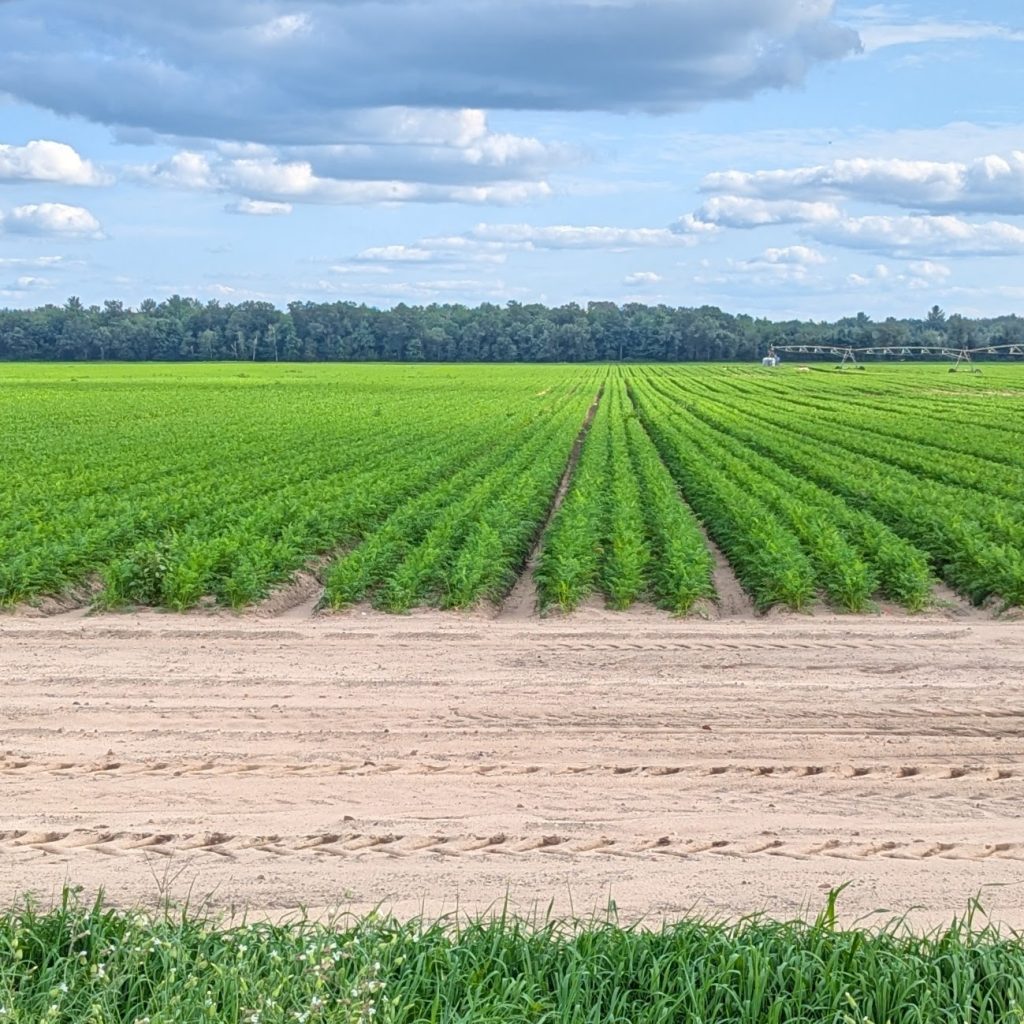
View weather and climate conditions this week in Wisconsin
Here are this week’s take home points about the weather, scroll down for the full report:
Current Conditions
- A warmer-than-average week for most of WI last week helped push the 30-day average temps above the climatological normal.
- Precip has been very hit-or-miss over the past week & month. Monthly totals were highest in the S/SE and parts of the NW.
Impact
•Abnormal drynessis showing up in parts of the N, with higher moisture percentiles in the middle of the state.
- Corn silking is running 3% behind normal pace, with 61% of the crop reported in good to excellent condition.
- Soybeans pod setting is running 1% behind normal pace, with 60% of the crop reported in good to excellent condition.
•GDDs are approaching 2000 (1600) unitsin the southern (northern) counties, running ahead of normal pace in the S & E.
Outlook
•Lesser precip totals forecasted across WI this next week, with a higher likelihood in the NW.
•Temperatures leaning above normal heading into mid August, with most in the state leaning towards above normal precip.
•The warmer-than-normal conditions have a higher probability to continue into early fall with a La Niña pattern taking shape. Currently, we are in a neutral phase.
What does this mean for you? Here are some things to consider for your farm this week:
Crop Development
•Soil moisture is adequate or even high in most places. Be cautious about trafficking fields during muddy conditions to avoid rutting. Remember, compaction occurs when soil water content is at, or slightly above, field capacity!
•Hot days mean accumulations of 20+ GDUs per day. Keep on top of your growth stages to time other applications.
•Scouting for crop stage and development of issues is very important this year as the wet spring means that there is a lot of variability in fields and across farms.
•As short season crops come off, consider diverse cover crop mixes to help mitigate any compaction that may have occurred this spring.
Manure Applications
•Runoff risk is low for most of the state in the next week. Be mindful of the possibility of runoff and plan manure applications accordingly. Check the DATCP runoff risk advisory forecast here.
•After wheat harvest there is an opportunity for manure and cover crops, see info here.
Pest Management
•Peak western bean cutworm flights have passed in the South. Sign up to receive text alerts when pests are in your region here.
•Japanese beetles have emerged, monitor for defoliation thresholds, see here for management information.
•Time to scout for soybean aphid, see more info here.
•Conditions have been right in many places for tar spot and white mold, information available here.
Forage Management
•Ensure wide swaths when mowing alfalfa to increase rate of drying and harvest sooner, reducing risk of rain damage.
•Avoid hay fire risks. Be aware of hay moisture and monitor stack temperature when putting up dry hay, consider wrapped bales.
•Look out for herbicide carryover, volunteers in late summer seeding of alfalfa after wheat. Read more.




